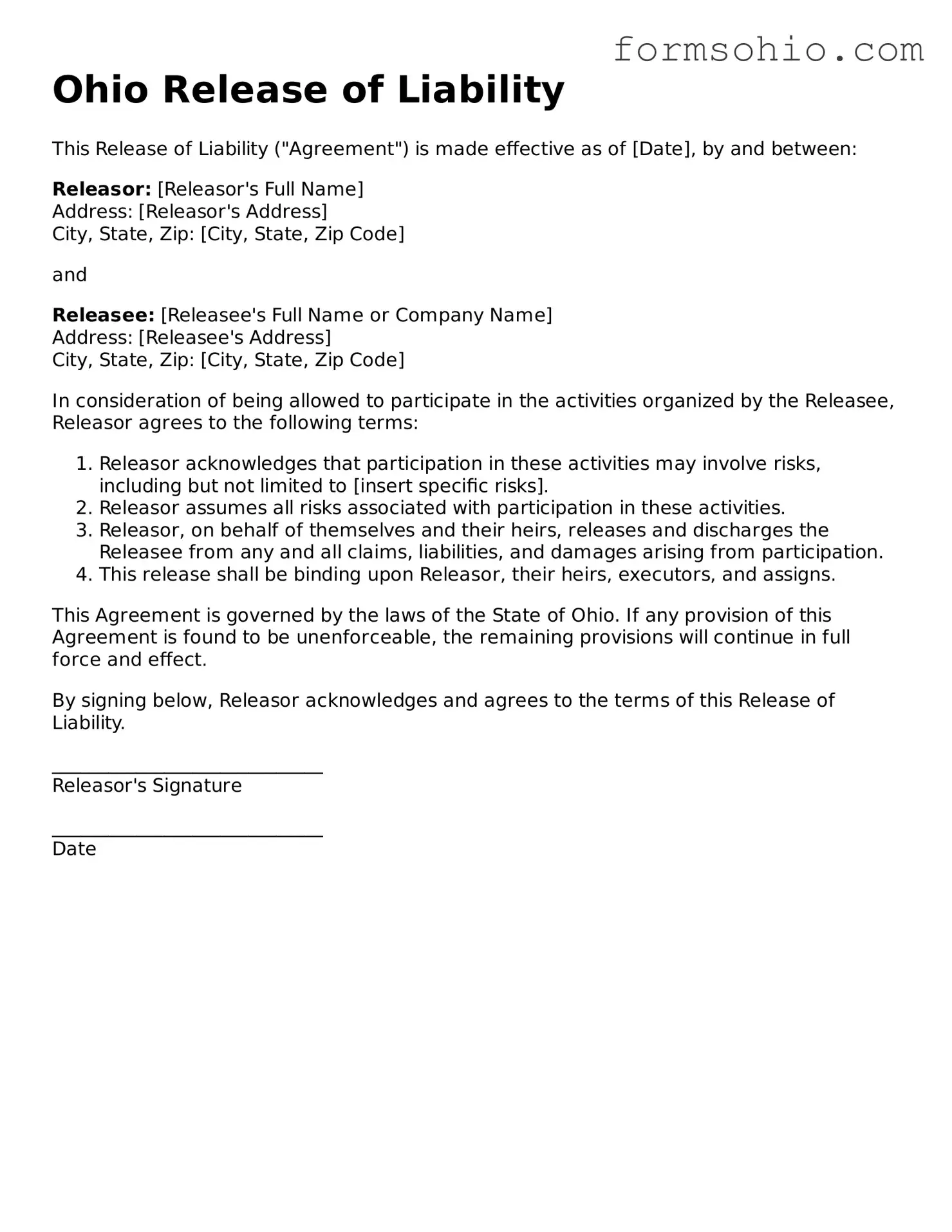Ohio Release of Liability
This Release of Liability ("Agreement") is made effective as of [Date], by and between:
Releasor: [Releasor's Full Name]
Address: [Releasor's Address]
City, State, Zip: [City, State, Zip Code]
and
Releasee: [Releasee's Full Name or Company Name]
Address: [Releasee's Address]
City, State, Zip: [City, State, Zip Code]
In consideration of being allowed to participate in the activities organized by the Releasee, Releasor agrees to the following terms:
- Releasor acknowledges that participation in these activities may involve risks, including but not limited to [insert specific risks].
- Releasor assumes all risks associated with participation in these activities.
- Releasor, on behalf of themselves and their heirs, releases and discharges the Releasee from any and all claims, liabilities, and damages arising from participation.
- This release shall be binding upon Releasor, their heirs, executors, and assigns.
This Agreement is governed by the laws of the State of Ohio. If any provision of this Agreement is found to be unenforceable, the remaining provisions will continue in full force and effect.
By signing below, Releasor acknowledges and agrees to the terms of this Release of Liability.
_____________________________
Releasor's Signature
_____________________________
Date
